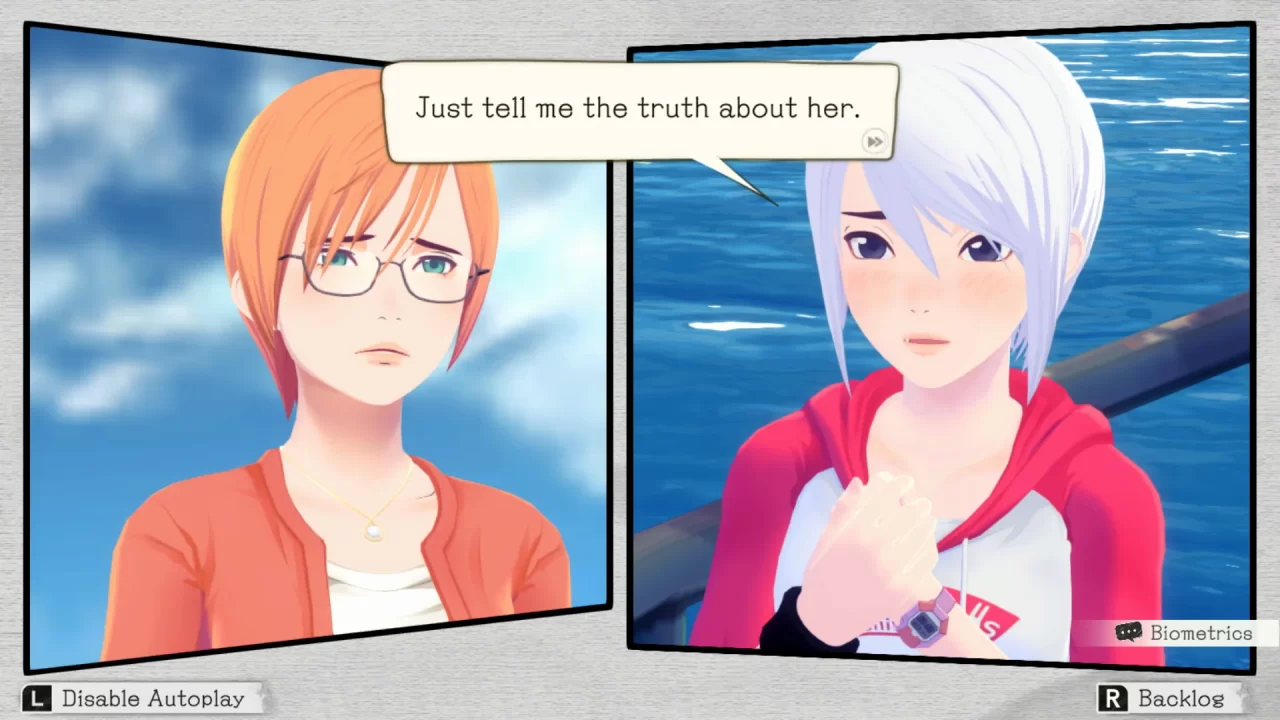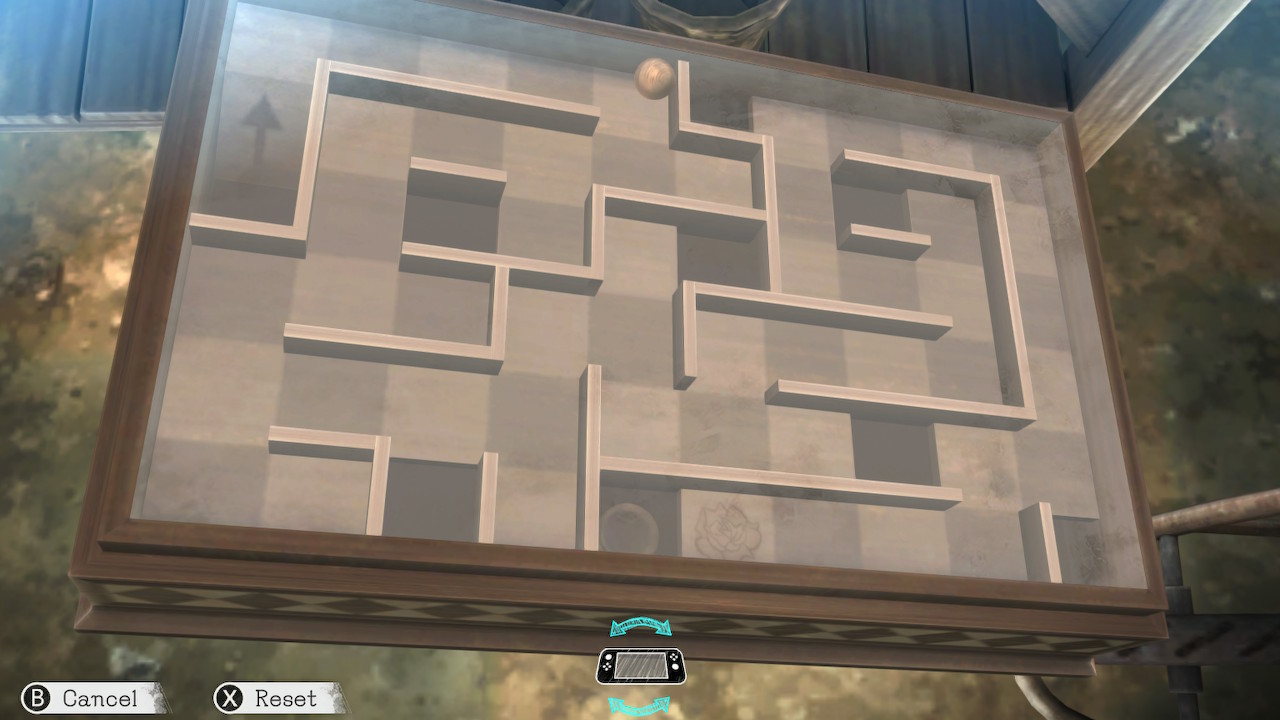Everyone has a beloved game that feels forgotten. It feels like those games will never receive a port to newer hardware—certainly not a complete remake. But the impossible happens every once in a while, a forgotten game resurfaces, and a group of fans cheer because the game gets a second chance. Another Code: Recollection is one of those moments for me.
Another Code: Recollection is a collection that reimagines two games, Trace Memory, known outside the United States as Another Code: Two Memories, and its sequel Another Code R: A Journey into Lost Memories. Both games are point-and-click adventure games that follow teenager Ashley Robins as she solves mysteries related to her past and the lives of the people she meets along the way.
The original game, Trace Memory, is a highly experimental early Nintendo DS game released in 2005. Trace Memory uses the touch screen for interacting with almost everything, and I was fascinated by it. I was new to point-and-click adventures and visual novels then, and my experience stuck with me. I never forgot the mystery of Blood Edward Island, and I revisited the game several times. The sequel, Another Code R: A Journey into Lost Memories, was released in 2009 for Wii, but, unfortunately, it was not released in the United States at the time and I was unable to play it. That makes the remake even more exciting because I could finally experience the second story!
The current collection is one linear story divided into two sections titled after the original games. The first half is titled Two Memories, and the second half is titled A Journey into Lost Memories.
Two Memories follows Ashley and her aunt, Jessica, as she visits the abandoned Blood Edward Island to meet her father who she believed was dead. After her father is a no-show and Jessica goes missing, Ashley meets the ghost of a young boy, D, and together they explore the ruins of the Edward family mansion in search of her missing family. Along the way, they unravel the mystery of what happened on Blood Edward Island and search for clues about D’s past.
A Journey into Lost Memories takes place two years after the first story. Ashley visits the community surrounding Lake Juliet, a place her deceased mother loved, hoping to recover lost memories of her mother. Along the way, she uncovers the truth behind a recent community tragedy and broken dreams.

Both stories are good, but Two Memories is the clear winner. Some of my admiration for Two Memories may be nostalgia, but I feel that exploring the mansion and learning about D and the Edward family through your discoveries is a more satisfying experience, even though I already knew the whole story. A Journey into Lost Memories suffers from having too many extra characters, an extra sub-plot that doesn’t seem to go anywhere meaningful (though it adds some additional character development for Ashley), and some extremely convenient plot devices that were so hilariously bad that I feel they must have appeared intentionally as a joke.
It is still a good story, but the larger explorable area and additional characters significantly weaken the pacing. It felt like there was never a moment to focus on completing my given objectives. Along the way, I always ran into someone who wanted to chat for five or ten minutes before giving me something else to do as a distraction. For fans of the Wii version of Journey into Lost Memories, it is worth noting that the updated version reworked the story. I have not played the Wii game, but after reading the plot synopsis and watching some old gameplay, there were notable differences. A Journey into Lost Memories may be a somewhat fresh experience for all players, but Two Memories is mainly faithful to the original story.
The visual presentation is a massive upgrade over the original games, and the inclusion of voice acting for the entire experience was unexpected. These are niche all-but-forgotten games, and it’s surprising to see so much care put into remaking them. The anime graphic style is simple and effective. The locations have been reimagined in a modern and realistic way (the map design of the Nintendo DS game is unrealistic, to say the least). The music is subtle and a bit forgettable (like the original), but the sound design received more care than I ever expected. I am not extremely critical of voice acting, but I feel that the voice performances are excellent, with maybe a couple of exceptions in the second half of the story. The way the world of Two Memories came alive evoked nostalgia regularly.

Unfortunately, stiff controls weaken the enjoyment of exploring. For some inexplicable reason, the default camera speed is “so slow you’ll think your controller is broken.” Thankfully, there are camera speed settings, but I never actually found the sweet spot. Everything felt too slow or too fast and janky. Even the menus feel a bit slow to navigate, and you need to open them frequently. The camera position also feels off. It seems like they were going for a third-person over-the-shoulder feeling, but the camera is pulled too far back—but not so far back that it’s a true third-person game. It’s not a dealbreaker, but it felt off.
The remake mostly excels in its presentation, but the gameplay involves more questionable decisions. Trace Memory was always a fun but average game. Another Code: Recollection solves some of the shortcomings and annoying game design decisions, but it accomplishes this by removing a lot of the novelty of the original games. While the original games are point-and-click adventures rightly compared to PC classics, the remakes are probably better described as visual novels. There are extensive sections of dialogue with no meaningful gameplay between them.
Another such decision is removing the vast majority of the interactive puzzles. Instead, everything is menu-based. For example, in the Nintendo DS game, you swipe the touch screen to throw a baseball at a suitcase on a high shelf to knock it down and see what is inside. In Another Code: Recollection, the same suitcase is easily accessible, but now it’s locked with a combination; you must use the information you have collected elsewhere to correctly guess it. Another example: the Nintendo DS game has a famous (infamous) puzzle where you need to close the clamshell of the Nintendo DS to press the objects on the top screen onto the bottom screen. This puzzle is completely removed. Instead, you collect objects around the mansion and place them in the correct order to open a box. Along the way, you learn the same information the original puzzle taught.

Almost all of the puzzles are menu and logic-based now, and there are surprisingly few of them. There is still a limited collection of interactive puzzles, but they use the more limited tools available to the Nintendo Switch. A few motion-based puzzles require tilting the controller, like one puzzle where you guide a ball through a maze. There are also some timing-based puzzles where you need to push the correct buttons in a sequence. Most of the puzzles are simple; this is not a difficult game. However, there were a few times when I got stuck for a few minutes trying to determine the right solution based on the information I gathered. However, I’m glad (and somewhat embarrassed) to report that while Two Memories removed its most infamous puzzle, it has its own “close the DS moment” that had me hunting the Internet for answers on release day after being stuck for 20 minutes.
I finished Another Code: Recollection in about 15 hours, and even though I’m being a bit harsh on the puzzle design, I really enjoyed the time I spent with it. It’s a good remake that makes two interesting stories available to experience again after over a decade. That is my big takeaway; these remakes are about the stories. The excellent graphics overhaul, reimagined locations, and solid performances make it clear that telling interesting stories was the primary goal here. The puzzle design came second, and that might not be what every fan of the original games is hoping for. Another Code: Recollection reimagines two classic point-and-click adventure games as visual novels for beginners, and it does an excellent job meeting that goal. This remake doesn’t make the original games obsolete, but it’s the definitive way to experience the story of Ashley Robins.


